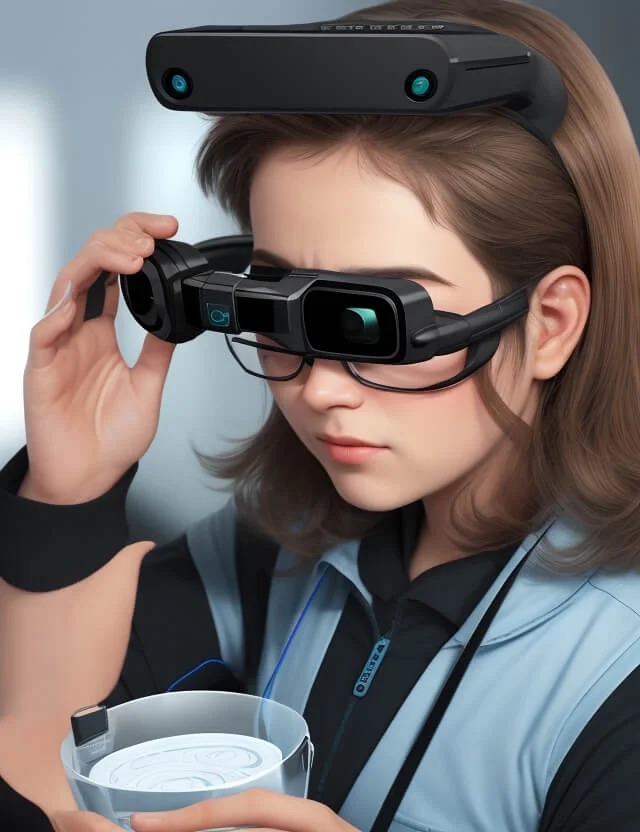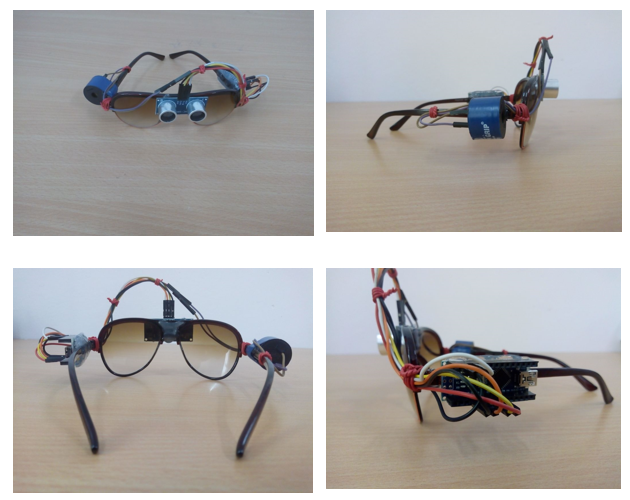Speech-to-Text Devices for Low Vision Users: Enhancing Communication and Productivity
Speech-to-Text Devices for Low Vision Users: Enhancing Communication and Productivity
Blog Article
Empowering Self-reliance With Assistive Technology for the Blind
The combination of assistive technology for people who are visually damaged or blind represents a considerable advancement in promoting independence and improving quality of life. With a variety of devices-- from display viewers to cutting-edge tactile tools-- these innovations not just facilitate navigating and interaction however additionally promote social addition and participation in different facets of life. As we explore the diverse sorts of assistive devices and their real-world applications, it ends up being clear that the effect is extensive. Yet, the evolution of this innovation elevates crucial questions concerning accessibility and future advancements that necessitate further evaluation. Assistive technology for the blind.
Recognizing Assistive Modern Technology
Although assistive innovation has actually progressed dramatically for many years, its basic function stays the same: to enhance the lifestyle for people with handicaps, specifically those who are aesthetically impaired or blind. This technology incorporates a wide series of devices and gadgets that help with independence and capability in everyday tasks.
Assistive technology can be categorized into sophisticated and low-tech options, each created to satisfy specific needs. Modern tools commonly include software applications, specialized hardware, and flexible gadgets that make use of sophisticated technology to supply support in numerous contexts. Conversely, low-tech remedies may include everyday products that are changed to improve access, such as magnifiers or tactile pens.
The integration of assistive modern technology into the lives of people that are blind or aesthetically hindered not just advertises autonomy however likewise fosters social inclusion and participation in educational and specialist atmospheres. By leveraging these technologies, customers can navigate their surroundings, access details, and connect effectively, thereby improving their total top quality of life. Understanding assistive modern technology is crucial for supporters, caregivers, and professionals who aim to sustain people in optimizing their possible and attaining greater self-reliance.
Sorts Of Assistive Gadgets
Assistive gadgets for the aesthetically impaired and blind are crucial tools that boost daily obeying attending to certain difficulties run into by customers. These gadgets can be generally categorized into 3 primary types: optical tools, digital gadgets, and sensory devices.

Sensory devices, such as Braille screens and responsive maps, supply alternative ways to get information. Braille presents transform electronic message right into Braille, making it possible for users to go through touch. Responsive maps provide spatial understanding via elevated lines and structures, permitting for better environmental awareness.
With each other, these assistive tools empower people with visual problems to involve more fully with their surroundings, promoting higher independence and self-confidence in day-to-day activities.

Influence on Every Day Life
The assimilation of assistive innovation into the daily lives of people that are aesthetically impaired or blind considerably enhances their capacity to navigate and interact with the world around them. Devices such as display visitors, Braille displays, and mobile applications facilitate accessibility to info, permitting users to involve with electronic material, interact efficiently, and manage day-to-day tasks individually.
Additionally, technologies like wise glasses and navigation apps provide real-time help in unfamiliar settings, improving wheelchair and confidence. These tools make it possible for individuals to recognize obstacles, reviewed signs, and also recognize faces, therefore cultivating a sense of autonomy in public rooms. Additionally, home automation systems, which can be regulated via voice commands, enable people to handle their living atmospheres extra efficiently, boosting comfort and security.
The influence of assistive technology prolongs past useful jobs; it advertises social inclusion and psychological health. By bridging the space in between people and their discover here environments, these technologies equip customers to get involved completely in neighborhood activities, go after instructional possibilities, and take part in meaningful connections. Eventually, the innovation of assistive technology contributes in redefining the possibilities for individuals who are blind or visually impaired, resulting in a much more obtainable and comprehensive culture.
Success Stories and Endorsements

An additional powerful testimonial originates from Mark, a recent college grad who utilized display reading software program throughout his scholastic journey. This modern technology allowed him to access training course materials and take part in conversations, eventually leading to his effective shift right into the labor force. Mark credit reports assistive innovation for encouraging him to accomplish his career objectives, emphasizing its duty in leveling the playing area for individuals with aesthetic impairments.
In addition, neighborhood facilities have reported raised involvement in their programs many thanks to the introduction of obtainable digital systems. These platforms have actually made it easier for individuals to attach, share resources, and assistance each other. These success tales collectively highlight the extensive effect of assistive innovation in fostering self-reliance, boosting lifestyle, and damaging down obstacles for the blind and visually impaired community.
Future Patterns in Assistive Technology
Emerging innovations are positioned to revolutionize the landscape of assistive tech for individuals that are visually impaired or blind. Technologies in artificial intelligence (AI) and artificial intelligence are boosting the capabilities of devices, allowing even more instinctive user experiences. For instance, AI-driven applications are progressively able to review and recognize objects text aloud in real-time, offering individuals with beneficial details concerning their surroundings.
Furthermore, improvements in wearable innovation are creating brand-new chances for independence. Smart glasses outfitted with enhanced reality features can overlay essential info onto the user's field of view, assisting in navigating and communication with the atmosphere. The assimilation of Internet of Points (IoT) devices is simplifying ease of access in clever homes, enabling customers to control devices and receive notices via voice commands or tactile user interfaces.
The development of braille screens and responsive feedback systems is likewise on the rise, promoting accessibility to digital material and boosting interaction. As these innovations proceed to advance, they promise to improve day-to-day living, educational chances, and work leads for individuals with visual disabilities. Continual collaboration between engineers, customers, and advocacy teams will be necessary in ensuring these developments satisfy the demands of the area effectively.
Final Thought
Finally, assistive modern technology plays a crucial role in enhancing the independence of individuals who are visually impaired or blind. By offering necessary devices and sources, these innovations assist in boosted accessibility, navigating, and interaction to info, thus fostering autonomy and confidence. The transformative impact of assistive devices not just advertises efficient interaction with the environment but additionally urges social addition and engagement in numerous elements of life, eventually empowering customers to grow within their neighborhoods.
The combination of assistive technology for people that are blind or visually damaged stands for a substantial improvement in fostering independence and boosting high quality of life.The integration of assistive modern technology into the more lives of people that are blind or visually harmed not just promotes freedom however additionally promotes social addition and engagement in academic and professional settings. Inevitably, the advancement of assistive innovation is instrumental in redefining the opportunities for individuals that are blind or visually damaged, leading to an extra inclusive and accessible society.
Several individuals that are blind or visually impaired have shared motivating success stories that highlight the transformative effect of assistive modern technology on their lives.In final thought, assistive modern technology plays a critical function in boosting the independence of people that are blind or visually impaired.
Report this page